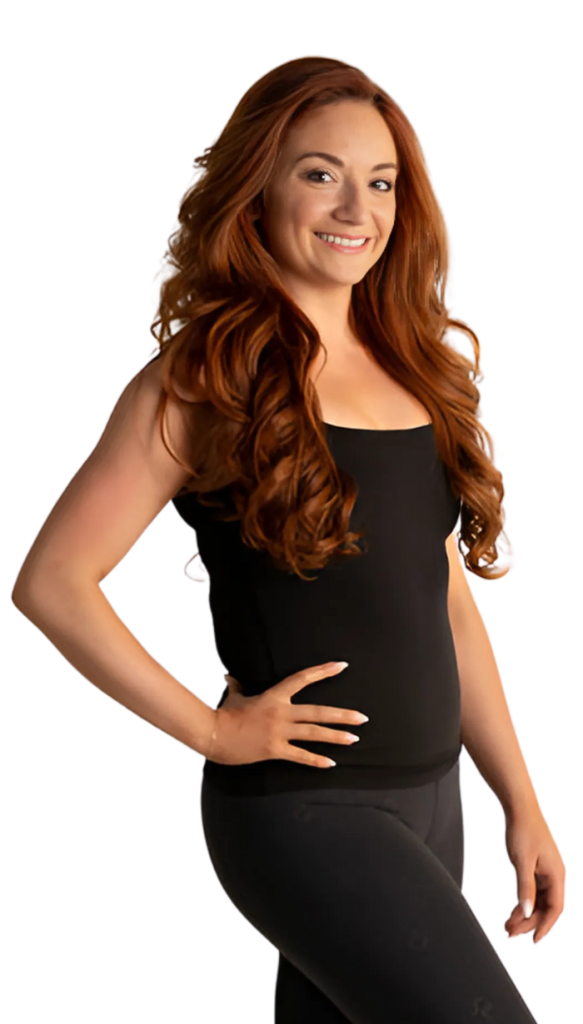Thinking About Pilates? Start Your Fitness Journey with Best Pilates Instructors

Introduction You’re not the only person thinking about Pilates as your new fitness regimen. Pilates is becoming more and more popular because of its potent blend of mental clarity, strength, and flexibility. The important thing is that you begin your journey with the top Pilates instructors. Your relationship with this life-changing practice can be made or broken by the advice you get in those initial sessions. You’ll learn how to move correctly, prevent injuries, and feel more assured about your development with the help of highly skilled instructors. Choosing the best Pilates instructors ensures your Pilates journey starts on the right foot. What Is Pilates and Why Is It So Effective? The Origin and Philosophy Joseph Pilates created the Pilates exercise regimen in the early 1900s. It emphasizes breathing, alignment, and controlled motions to build balance, coordination, and core strength. Pilates prioritizes quality over quantity, in contrast to high-impact workouts. People of all ages and fitness levels can access and safely practice it thanks to its precision, flow, and control. Physical and Mental Benefits Pilates is more than just physical fitness. Along with increasing body awareness and lowering stress, it also strengthens the core, posture, and muscle tone. Better mental health can result from the meditative practice of paying attention to breath and moving mindfully. The top Pilates instructors are in great demand because of their holistic approach; they know how to modify exercises to help the body and mind. Choosing Between Mat and Reformer Pilates Understanding the Differences While Reformer Pilates uses a specialized machine with springs, ropes, and a sliding carriage, Mat Pilates uses bodyweight exercises on a mat. Each offers special advantages: Which Is Right for You? It is frequently advised that novices begin with mat Pilates in order to cultivate good form and body awareness. The top Pilates instructors, however, can help you select the best modality for your goals, fitness level, and any underlying medical conditions. Why Instructor Expertise Matters Certified vs. Non-Certified Instructors Not all certifications are created equal in the fitness industry. High-level certifications from groups such as BASI Pilates or the Pilates Method Alliance (PMA) demonstrate a thorough comprehension of anatomy, injury prevention, and movement principles. Experience in Specialized Areas Pilates instructors who specialize in different populations, such as athletes, the elderly, pregnant and postpartum clients, or people recovering from injuries, are the best. Their knowledge enables them to create lessons that are safe and challenging for every student. How the Right Instructor Transforms Your Pilates Journey Injury Prevention When performing exercises that target the spine and core, improper form can result in strain or injury. Proper alignment and cueing are ensured by knowledgeable instructors, ensuring the safety of your workouts. Faster Progression Students achieve better outcomes more quickly when they receive tailored feedback and follow structured progressions. Expert instructors know how to keep you moving forward without plateaus, whether you’re working on strength, flexibility, or postural alignment. Motivation and Accountability Sometimes a gentle prod is all we need. An informed and sympathetic teacher serves as your mentor, inspiration, and occasionally even a cheerleader. Maintaining consistency can be greatly aided by their encouragement. Qualities to Look For in the Best Pilates Instructors Empathy and Communication A great teacher starts by listening. They should be personable, perceptive, and capable of giving directions in a clear and succinct manner. Continuing Education The wellness and fitness sector is always changing. Seek out educators who maintain current knowledge, earn advanced certifications, and attend workshops on a regular basis. Studio Environment Studios that value quality over quantity are frequently home to excellent instructors. Top professionals are typically drawn to studios with smaller class sizes, a focus on safety, and hygienic, welcoming spaces. Where to Find the Best Pilates Instructors Online Research and Reviews A fast Google search or a look through social media sites can reveal information about the credibility, client satisfaction, and teaching philosophies of local educators. Studio Referrals Ask about the credentials of the instructors at respectable studios in your neighborhood. Before committing, don’t be afraid to request trial classes or attend a session. Ask the Right Questions Tailoring Your Pilates Experience to Fitness Goals For General Fitness and Health A well-rounded regimen of mat and Reformer classes is ideal if you want to increase your overall level of fitness, flexibility, and mental health. You will be led through exercises that enhance posture, balance, and full-body strength by a knowledgeable instructor. For Rehabilitation Specialized instructors who work with physical therapists can provide therapeutic routines that improve mobility and lessen pain for those recuperating from an injury or surgery. For Athletes Pilates is a popular training aid for both professional and amateur athletes. In order to improve sports performance and lower the risk of injury, the top Pilates instructors for athletes concentrate on core stability, rotational strength, and functional movement patterns. Why Blue chip Conditioning Is Becoming a Preferred Choice When looking for the best Pilates instructors, take into account websites such as Blue Chip Conditioning, which is renowned for offering a wide range of wellness services, including Pilates, athlete training, and personalized rehabilitation plans. Their teachers are qualified, skilled, and enthusiastic about helping people change. The Role of Nutrition and Lifestyle Pilates is just one component. Your overall success is influenced by stress management, a healthy diet, and getting enough sleep. To complete your wellness journey, many of the top Pilates instructors will offer basic lifestyle advice or make professional referrals. Real Stories: How Top Instructors Make a Difference Case Study 1: From Injury to Strength Under the supervision of a skilled instructor, a client recuperating from a serious knee injury turned to Pilates. They experienced less pain, regained full mobility, and gained the confidence to resume their favorite sports in a matter of months. Case Study 2: Mental Health Transformation Another student who was experiencing anxiety discovered that Pilates offered both emotional stability and physical relief. A key component of their mental health regimen was the sense of security and predictability that the
Reformer or Mat: Which One Is Better for Your First Pilates Classes?

Introduction Pilates classes can be a life-changing way to begin your fitness journey. Pilates provides a thoughtful approach to strength and flexibility with its emphasis on alignment, breath control, and controlled movement. But novices frequently face a critical dilemma: should you begin with reformer Pilates or mat Pilates? Knowing the differences between the various approaches can help you choose the one that best suits your comfort level, fitness level, and personal objectives. We’ll go into great detail about both reformer and mat Pilates class formats in this post to help you choose the one that will work best for your first Pilates session. Understanding Pilates and Its Benefits What Is Pilates? Joseph Pilates created the low-impact Pilates exercise program, which emphasizes flexibility, core strength, and general body awareness. A standard Pilates class consists of a number of exercises intended to enhance muscular balance, posture, and coordination. The Benefits of Pilates for Beginners Whether on a mat or a Reformer machine, Pilates offers numerous benefits for newcomers: Reformer Pilates Explained What Is a Reformer? The Reformer is an apparatus that has ropes, pulleys, resistance springs, and a sliding carriage. It can be adjusted for varying resistance levels and permits a complete range of motion. Dynamic, focused workouts are provided by this machine-based Pilates class. Pros of Reformer Pilates for Beginners Cons of Reformer Pilates Mat Pilates Unpacked What Is Mat Pilates? Mat Pilates is a series of exercises where you use your body weight as resistance while performing the exercises on a mat. It serves as the cornerstone of all Pilates instruction and frequently introduces the core exercises that are used in Reformer classes. Pros of Mat Pilates for Beginners Cons of Mat Pilates Which Option Should You Choose First? Your Fitness Goals Mat classes are a great place to start if you want to improve your flexibility and establish a solid foundation. However, a Reformer Pilates Class might be a better option if you want a more strenuous strength-training session with more support. Your Comfort Level Because mat Pilates is easy to learn and reasonably priced, beginners frequently feel more at ease beginning with it. Reformer sessions, on the other hand, might be ideal for people who like structured equipment and guided resistance. Accessibility and Budget Mat classes are more accessible to new students because they are widely available and frequently less expensive. Your decision may be influenced by the fact that Reformer Pilates may require you to join a specialized studio or gym. Expert Insights: What Instructors Recommend In order to grasp the concepts of alignment, breathing, and core engagement, certified Pilates instructors frequently advise beginning with a few mat classes. Making the switch to Reformer sessions can help you develop your practice and expand your repertoire once you’re comfortable doing so. Studio Environment and Class Structure What to Expect in Your First Class How to Prepare Hybrid Approaches: Best of Both Worlds Numerous studios provide hybrid classes that incorporate both Reformer and mat exercises. This enables you to enjoy the resistance and variety of Reformer workouts while gaining the body awareness and core strength of mat Pilates. Those who wish to prevent their progress from plateauing will particularly benefit from a hybrid approach. Final Recommendation: Mat vs. Reformer To establish a solid foundation if you’re just starting out, think about starting with mat Pilates. To advance your practice and reap the rewards of equipment-based training, enroll in Reformer classes after you’ve gained a certain amount of comfort and control. Your financial situation, personal objectives, and the availability of classes in your area will all play a role in selecting the best format. In any case, you’re preparing for a more robust and healthy body. Conclusion There are many advantages to both mat and reformer Pilates class options. In the end, your choice should be based on your objectives, physical requirements, and degree of equipment comfort. Consistent practice under the supervision of qualified professionals will position you for success regardless of the route you decide to take. You can make sure you’re performing movements safely and effectively by working with the top pilates instructors. Their knowledge can also help you modify methods to fit your particular body type and fitness objectives. Pilates is ultimately a lifelong process of strengthening, stretching, and refocusing your body and mind, whether you do it on a mat or a reformer. Accept the process and take pleasure in every advancement. FAQs Can I switch between mat and Reformer classes as a beginner? Yes, a lot of studios support it! While a Reformer adds resistance for increased muscle engagement, a mat can help you learn the fundamentals. Are Reformer classes harder than mat classes? Not always. You can adjust both to your level of fitness. Although the additional resistance may make reformer feel more intense, it can also provide beginners with support. Do I need to be flexible to join a Pilates class? There is no need for prior flexibility. In actuality, Pilates gradually increases your range of motion. How do I find the best pilates instructors in my area? Seek out certified teachers with a teaching style that suits you, a lot of experience, and positive reviews. Some of the best pilates instructors in the area are known to work at studios like Blue Chip Conditioning in Las Vegas.
What’s the difference between regular training and elite athlete development?
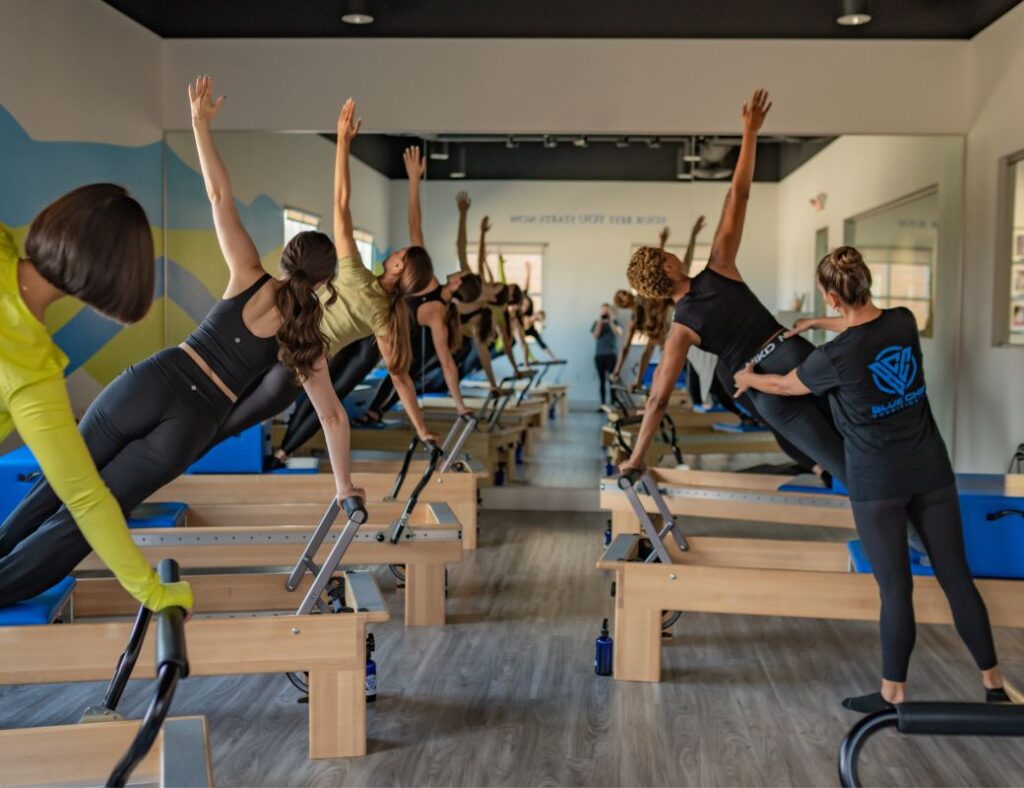
Introduction The way you train can make the difference between being good and being elite in today’s competitive sports environment. Elite athlete development goes far beyond the fundamentals of fitness, general strength, and skill acquisition that are the focus of regular training. It entails a thorough, data-driven, and highly customized strategy designed to maximize athletes’ performance. This article delves into what makes elite programs so special and how they support long-term athletic success, examining the precise distinctions between regular training and elite athlete development. Understanding Regular Training What is Regular Training? Regular training is the standard approach most recreational or amateur athletes follow. It often includes: While beneficial for maintaining health and building foundational fitness, regular training lacks the specialized elements required for high-level competition. Who is Regular Training For? Regular training is suitable for: These individuals typically aim to stay fit, lose weight, or participate in local competitions without the need for intense performance metrics or elite-level goals. Benefits of Regular Training What is Elite Athlete Development? The Core Definition Peak athletic performance is the goal of elite athlete development, a highly specialized, scientific training methodology. It encompasses a comprehensive approach that includes tactical, mental, and physical conditioning in addition to basic fitness. This stage of development is frequently observed in professional sports training settings, collegiate athletic programs, and Olympic preparation. Components of Elite Athlete Development Individualized Training Programs Each athlete receives a program customized to their specific strengths, weaknesses, goals, and sport-specific demands. Performance Testing and Monitoring Sports Psychology Mental toughness and mindset training are integral. Athletes are coached on focus, visualization, and coping mechanisms under pressure. Nutrition and Recovery Elite athletes work closely with sports nutritionists to fine-tune diet plans for optimal energy and recovery. Recovery strategies include: Injury Prevention and Rehabilitation Through functional assessments and corrective exercises, athletes reduce the risk of injury and bounce back faster if injuries occur. Who is Elite Athlete Development For? Key Differences Between Regular Training and Elite Athlete Development Level of Personalization Use of Technology Team of Experts Goal Orientation Time Commitment and Intensity Focus on Recovery The Role of Environment and Culture Training Atmosphere Elite training centers cultivate a performance-driven culture. From locker rooms to training floors, the environment is built to push limits. Accountability and Discipline Elite athletes are held to high standards. Regular feedback, monitoring, and accountability are baked into the process. Continuous Education Athletes and coaches are in a loop of constant learning, adapting to new research, methods, and innovations. The Transition from Regular to Elite Signs You Might Be Ready What to Expect Transitioning involves: Real-Life Examples of Elite Athlete Development Olympic Sprinter Program Tailored biomechanical training and sprint mechanics improve start time and reduce injury. Collegiate Basketball Player Combines agility drills, power development, and sports-specific conditioning over a structured 6-month period. Youth Soccer Prodigy Integrated growth monitoring, technical skill sessions, and nutrition guidance create a roadmap to pro leagues. FAQs What makes elite athlete development different from personal training? The development of elite athletes includes mental conditioning, recovery procedures, performance analytics, and a multidisciplinary team approach. Being the best at your sport is more important than simply looking good. Complete athletic evolution is the focus of programs such as those at Blue chip Conditioning. Can anyone join an elite athlete development program? Yes, in theory, but athletes with clear performance objectives benefit most from these programs. Before creating customized programs, companies such as Blue chip Conditioning evaluate preparedness. Is elite athlete development only for professionals? No. Aspiring athletes, high school prodigies, and college recruits can all benefit from these programs. The goal is to unlock potential, not just sustain it. How long does it take to see results? It varies, but most athletes see measurable improvements in strength, speed, and endurance within 8-12 weeks if they follow the plan diligently. Conclusion In the realm of athletics, training frequently makes the difference between “good enough” and “greatness.” Athlete development makes you a competitor, while consistent training keeps you healthy and active. It is methodical, purposeful, and results-oriented. Consider switching from simple routines to elite programming if you’re prepared to step up your game. You’ll be more equipped to reach your performance objectives with a professional setting, state-of-the-art resources, and knowledgeable coaching. Selecting the appropriate developmental path is essential, and choices such as blue chip conditioning enable elite training to be both accessible and effective. Athlete development can be the game-changer you need, whether your goals are to achieve personal bests, Olympic aspirations, or college scholarships.
What Every Serious Athlete Should Know About Elite Athlete Development Training?
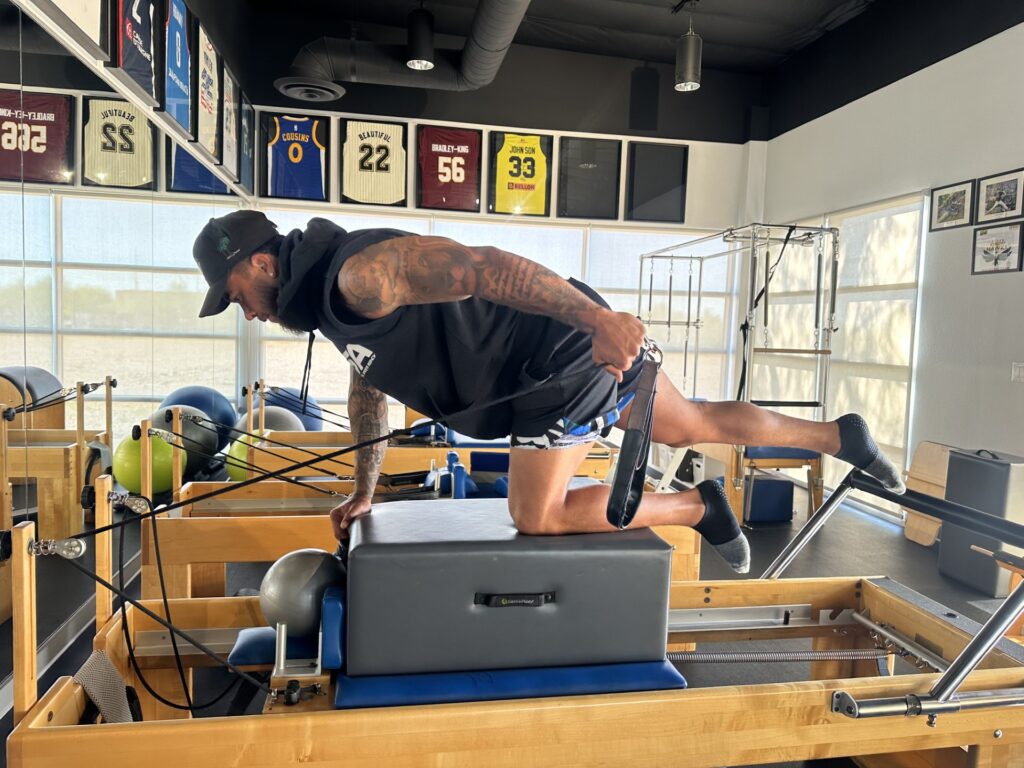
Introduction Elite Athlete Development is the solution, whether you are chasing collegiate scholarships, training for professional sports, or just wanting to maximize your athletic potential. This training is designed to improve every aspect of the athlete’s physical and mental performance by closing the gap between unrefined potential and performance excellence. In this guide, we’ll explore Elite Athlete Development: the fundamental components, why it is important and how to include it in your training plan. What Is Elite Athlete Development? Understanding the Concept Elite Athlete Development is an all-encompassing, evidence-based training protocol developed for serious athletes. It is an integration of sport specific strength, agility, flexibility / mobility, recovery and mental performance strategies. Unlike most off-the-shelf workout programs, Elite Athlete Development considers the unique requirements of the individual, sport specific proficiencies, and long term sustainable athletic development. The Science Behind It There are biomechanics, kinesiology, sports psychology, and more behind this type of training. Coaches have analytics of performance, movement assessments, and the ability to track training progress to help them create adaptive programs that change as the athlete changes. Key Pillars of Elite Athlete Development Customized Strength & Conditioning Programs One size doesn’t fit all in sports. Strength training for a sprinter will differ vastly from that for a basketball player. Programs are tailored to support each athlete’s sport, position, and physical attributes. Agility and Speed Development Quickness and agility are not just innate talents but can also be improved with drills, resistance training, and biomechanical corrections. Elite Athlete Development uses a variety of the latest tools and techniques in the development of quickness and agility. Mobility and Flexibility Training Athletes with tight hips, restricted shoulders, or poor range of motion risk injuries. This pillar focuses on foam rolling, dynamic stretching, and mobility drills that allow for optimal movement patterns. Recovery Protocols Recovery is training. Elite Athlete Development integrates cold plunges, compression therapy, massage, and sleep optimization strategies to support faster recovery and better performance. Mental Performance Coaching Success is 80% mindset. Visualization techniques, performance psychology, and goal-setting workshops are essential for helping athletes stay focused and resilient under pressure. Why Elite Athlete Development Is Non-Negotiable for Serious Athletes Stay Competitive At the elite level, talent alone isn’t enough. You’re competing with athletes who are genetically gifted, highly skilled, and well-coached. Elite Athlete Development ensures you’re optimizing every aspect of your performance. Injury Prevention Athletes often suffer from overuse or preventable injuries. By focusing on mobility, movement mechanics, and recovery, you significantly lower the risk of being sidelined. Longevity in Sport Elite athletes must think long-term. Training smart, not just hard, ensures you’re still performing when it matters most—in championships, trials, or pro tryouts. Choose the Right Facility Not every gym offers what elite athletes need. Look for facilities that provide access to sport-specific equipment, movement assessments, certified coaches, and recovery tools. Work with Certified Coaches Your coach should specialize in Elite Athlete Development. Look for credentials in strength & conditioning (CSCS), functional movement systems (FMS), and performance coaching. Set Clear, Measurable Goals Your program should evolve with your progress. Work with your coach to set short-term and long-term goals—whether it’s improving your vertical, sprint time, or endurance. Track Your Progress Use performance data, videos, and feedback from coaches to track and refine your training over time. Progress tracking is vital for sustained growth. FAQ: Q1: How is Elite Athlete Development different from regular personal training? Elite Athlete Development is highly specialized and tailored to athletes’ sport-specific needs, whereas regular personal training focuses more on general fitness and aesthetics. Q2: At what age should athletes begin Elite Athlete Development? While foundational skills can start early, focused development often begins around ages 12-14 and continues through college or professional careers. Q3: Can Elite Athlete Development help with injury recovery? Yes, many programs include injury rehabilitation and post-rehab training to ensure a safe return to sport. Q4: Do athletes need to train daily? Not necessarily. Effective programs often include 3-5 sessions per week, balanced with recovery and rest days. Conclusion Elite Athlete Development is an area that many aspiring athletes overlook. The goal is not always related to weight lifted or speed; It is fostering an intentional, structured approach to training that is unique to you and your objectives. If you wish to enhance your performance and want to become the best of the best, now is the time to take advantage of a proven program. In this last stage of athletic development, a healthy awareness that a pilates class will help your core strength, posture, and control (all of which are often forgotten, but important aspects of elite performance) also while in the last stages of contact will be of benefit. Regardless of your position whether in an Elite Athlete Development program or considering your future options bear this in mind: champions are developed in training, not in competition. And sometimes a small addition like a pilates class – might just help you move that little bit further.
Affordable Studio Rentals in Las Vegas That Feel Like Premium
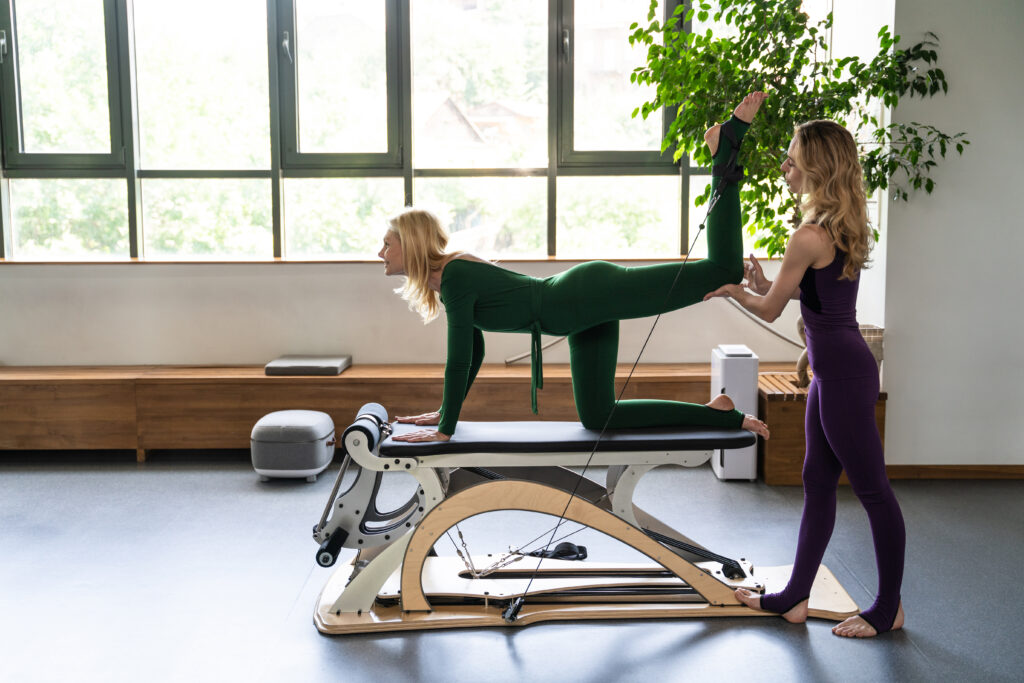
Finding the perfect balance between luxury and affordability can be tough but not in Las Vegas. With a growing demand for high-quality wellness spaces, Studio Rentals in Las Vegas are rising to meet the expectations of professionals, fitness instructors, and wellness entrepreneurs. Whether you’re launching a new class or hosting a private training session, Las Vegas offers stunning studio spaces that don’t break the bank. Why Studio Rentals in Las Vegas Are in High Demand Las Vegas is more than nightlife and entertainment. It’s also a destination for health-conscious individuals and wellness-focused businesses. There’s a need for flexible, high-performing spaces that’s never been more in focus. Versatility and Style Studios in Las Vegas come with a blend of functionality and aesthetics. Think hardwood floors, mirrors, adjustable lighting, and sound systems all in modern, climate-controlled environments. Central Locations Studios are often located in key neighborhoods, easily accessible by public transport and with ample parking. This makes them attractive to both local clients and visitors. Custom Rental Plans From hourly and daily rates to monthly packages, the rental options accommodate various business needs. Whether you’re hosting weekend las vegas pilates classes or planning full-time operations, there’s a plan for you. Features That Make Studio Rentals Feel Luxurious Just because you’re on a budget doesn’t mean you have to compromise. Here’s what makes these rentals feel premium: High-End Equipment Studios catering to las vegas pilates classes often include top-tier Reformers, chairs, towers, and props. These tools elevate the class experience for instructors and clients alike. Wellness-Focused Ambiance Studios are designed with wellness in mind. You’ll find calming decor, natural light, and even aromatherapy diffusers to enhance the environment. Community Amenities Some studios are part of wellness hubs that offer access to cafes, retail boutiques, or other fitness services all under one roof. This enhances the client experience and fosters a supportive business community. Choosing the Right Studio Rental Not all studio spaces are created equal. When choosing a rental, keep these considerations in mind: Check for Flexibility Some spaces offer 24/7 access, ideal for early morning or late-night classes. Flexibility in scheduling can be crucial for growing your business. Look for Transparent Pricing Avoid rentals with hidden fees. A reputable studio rental will offer clear terms for usage, cancellation, and extra services. Prioritize Cleanliness and Maintenance Clients are more likely to return if the studio is spotless and equipment is well-maintained. Make sure these standards are upheld. How Studio Rentals Enhance Pilates Class Experiences Leasing of a professional studio can do wonders for your company. Conducting classes for beginners or experts, a tidy professional studio instills confidence in one. For las vegas pilates classes, having access to a quiet, private room is important because it allows teachers to give intense, personal attention. It’s not just the movements the experience matters. Testimonials: What Renters Are Saying “I’ve leased studios in several cities, but there’s no comparison to Studio Rentals’ value and taste in Las Vegas. My clients love the atmosphere, and I love the flexibility.” Sarah M., Pilates Instructor “As a personal trainer, I needed a space that was professional but also welcoming. I found everything I was looking for in a studio on the side of the Strip great lighting, great vibe, and entirely in my budget.” Jason R., Trainer Who Benefits from Studio Rentals? Final Thoughts Whether you are launching your own label or simply wish for a prettier spot to teach, Studio Rentals in Las Vegas offer a winning combination of elegance, convenience, and usability. You don’t need to spend a fortune in order to provide your clients with an experience they’ll remember forever. If you’re willing to take your las vegas pilates classes to the next level, shop your rental options now and see just how luxurious affordable can be. FAQs What makes studio rentals in Las Vegas so affordable? Studios often offer flexible plans tailored to various needs. You can choose hourly, daily, or monthly packages to fit your budget. Are there studios equipped specifically for Pilates? Yes, many studios are equipped with Reformers, towers, and other essential gear, especially ideal for las vegas pilates classes. Can I host private classes or events? Absolutely. Many studios are designed to accommodate small group sessions, private training, or even wellness workshops. How do I find the best studio for my needs? Look for a studio that matches your brand aesthetic, offers essential amenities, and fits your schedule. Checking reviews and doing a walkthrough before booking is also a smart idea.
What to Wear to a Pilates Class? Pilates Clothes Advice for Men and Women
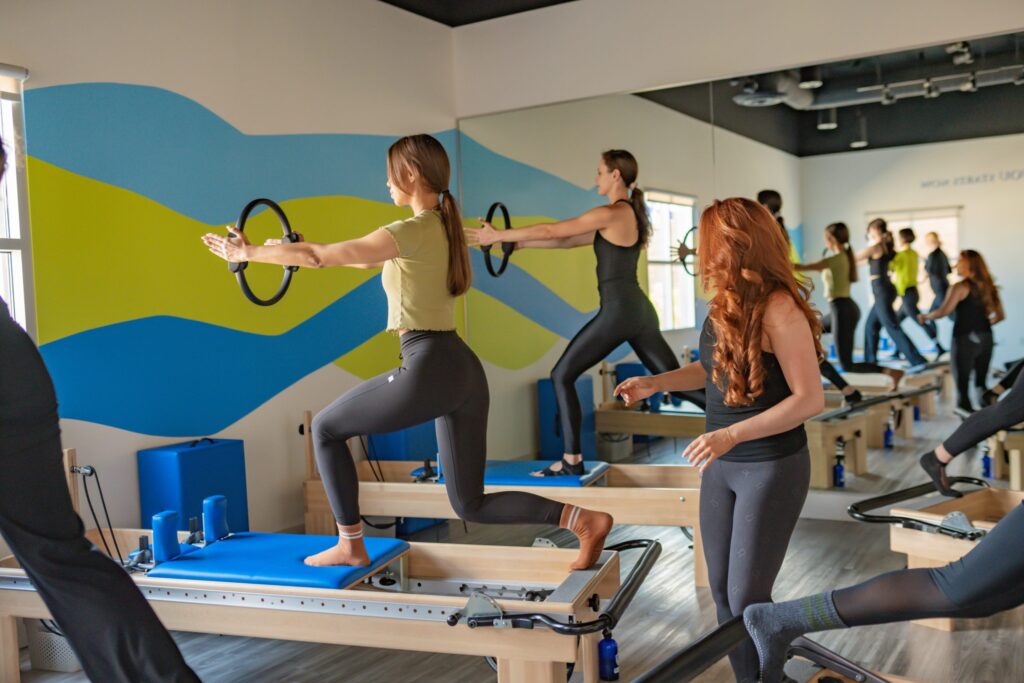
Introduction Pilates is primarily about movement, flexibility, and core strength, but many people forget that the right clothing can provide a noticeable difference in your practice. If you are completely inexperienced or have been practicing Pilates for years, knowing what to wear to a Pilates class may mean the difference between a comfortable practice and a hard-to-focus, uncomfortable practice. Here are the best types of clothing (for men and women) so that you can show up (and show off) ready for the class! Why Your Outfit Matters in a Pilates Class When attending a class, your clothing should allow for movement, not restrict movement. Loose or bulky clothes can restrict movements in exercises, can interfere with equipment, or take away from the instructors ability to correct your form. However, too tight clothes or inappropriate fabrics can cause you to overheat, or restrict your breathing. Best Pilates Clothing for Women Tops Select more fitted tank tops, or performance-type T-shirts that are made from fabric designed to wick moisture away from your body. Avoid looser fitting tanks or t-shirts since those will likely ride up as you move on the Reformer or while doing floor exercises. Then you will also want to wear a supportive sports bra, even if your Pilates class isn’t high impact. Bottoms Leggings or fitted yoga pants are best. High waisted leggings often give better support and stay in place as you twist and roll. It is best to avoid shorts, unless they are fitted. Loose shorts can be revealing in certain poses. Footwear Pilates is typically practiced barefoot or with grip socks. Grip socks provide traction on machines and mats and help maintain hygiene in shared studio spaces. Best Pilates Clothing for Men Tops Fitted t-shirts or athletic tanks work best. Avoid oversized shirts as they can hang in your face when you’re on your back. Breathable, stretchy material is key to staying comfortable and cool. Bottoms Men should choose slim-fit joggers, compression pants, or yoga shorts with an integrated liner. You want to wear something that will stay in place and move with you particularly during core-based exercises that are a main focus in a Pilates class. Footwear Like women, men can attend Pilates barefoot or with grip socks. If your studio requires socks, invest in a pair with anti-slip soles for safety. Fabric and Fit – What Works Best? Look for breathable, sweat-wicking fabrics like spandex blends, bamboo, or polyester. Cotton can get heavy and trap moisture, which makes it less ideal. Aim for clothes that are snug but not suffocating—think second-skin comfort. What Not to Wear to a Pilates Class Tips for Dressing for Your First Pilates Class Clothing for Specialized Pilates Classes If you are participating in a class that focuses on athletic conditioning or rehabilitation—especially with programs like elite Athlete Development—you may be asked to wear more supportive compression wear. These type of classes typically have faster movements, resistance training, and equipment that takes a bit out of your attire. Common Clothing Mistakes and How to Avoid Them FAQ What type of socks should I wear to a Pilates class? Grip socks are highly recommended. They offer traction, improve balance, and help keep shared equipment clean. Can I wear shorts to a Pilates class? Yes, but opt for tight-fitting options. Loose shorts can be awkward during poses that involve leg lifts or inversion. Do I need shoes for Pilates? No, Pilates is done barefoot or with grip socks. Regular shoes are not needed and usually not allowed. Is it okay to wear a hoodie or sweatshirt? You can wear one to warm up, but it’s best to remove it before class starts to allow full movement and keep cool. Conclusion Selecting the appropriate outfit for your Pilates class will help you feel comfortable and focused while ensuring your safety. Whether you’re wearing breathable leggings or supportive tops, wearing the right apparel will enhance your experience. If your Pilates class is advanced or specific to a physical motion or sport, like elite Athlete Development, function becomes even more relevant. Stay prepared and fashionable, and your body will thank you for it.
How Coaches Shape the Future of Elite Athlete Development
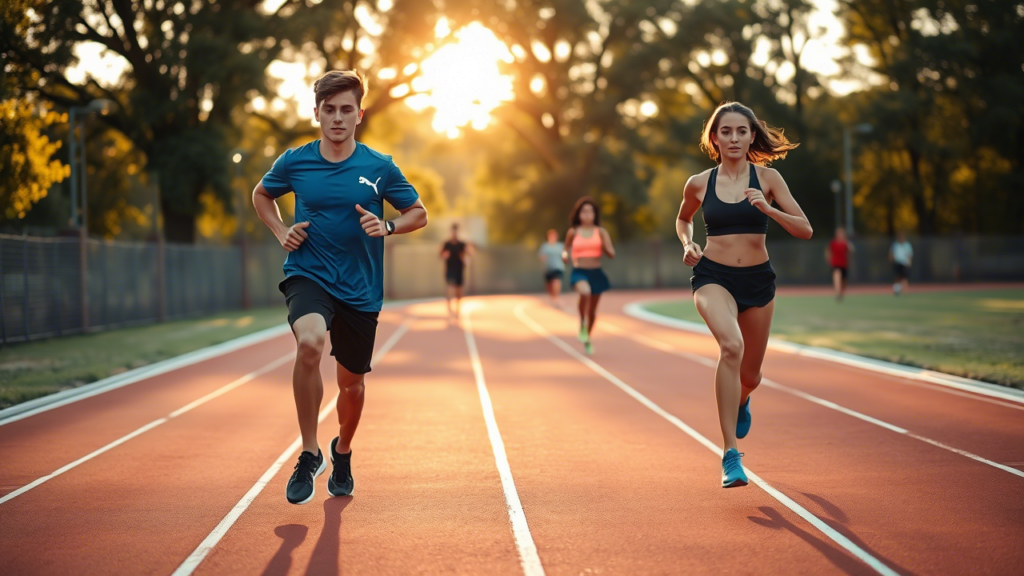
Introduction In the competitive world of sports, the role of a coach extends beyond training sessions and game strategies. Coaches play a pivotal role in elite athlete development, guiding athletes through the physical, psychological, and tactical aspects of their sport. With personalized training methods, strategic mentoring, and psychological support, coaches lay the foundation for an athlete’s success at the highest levels. This article explores how coaches shape the future of elite athlete development, the key strategies they employ, and the profound impact they have on sports performance. The Role of Coaches in Elite Athlete Development Identifying and Nurturing Talent One of the fundamental responsibilities of a coach is talent identification. Recognizing potential at an early stage allows athletes to be nurtured with specialized training programs tailored to their strengths and weaknesses. A well-structured elite athlete development system ensures that young athletes receive proper guidance from the start, which increases their chances of excelling in professional sports. Designing Individualized Training Programs No two athletes are the same. Coaches must develop personalized training regimens that cater to an athlete’s specific needs. Strength training, endurance exercises, agility drills, and recovery techniques must all be customized to enhance performance while minimizing the risk of injury. Elite athlete development depends on a well-balanced program that prioritizes both physical and mental well-being. Enhancing Technical and Tactical Skills For an athlete to compete at the highest level, technical proficiency and tactical awareness are crucial. Coaches refine technical skills through repetitive drills and real-game simulations. Additionally, they teach athletes how to analyse opponents, develop game intelligence, and execute strategies under pressure. This hands-on mentorship is vital in shaping a competitive mindset. Psychological Conditioning and Mental Toughness Sports success isn’t just about physical ability; mental strength plays an equally important role. Coaches employ psychological techniques to help athletes build confidence, focus, and resilience. Elite athlete development includes training the mind to handle setbacks, cope with pressure, and maintain peak performance in high-stakes environments. Modern Approaches in Elite Athlete Development Data-Driven Training and Performance Analytics Technology has revolutionized sports coaching. Coaches now rely on performance analytics to track progress, identify weaknesses, and optimize training methods. Wearable fitness trackers, video analysis, and biomechanical assessments help coaches make data-driven decisions to enhance elite athlete development. https://medium.com/@bluechipconditioning/what-are-the-top-benefits-of-joining-an-elite-athlete-development-training-program-c0309f34c8f9 Sports Science Integration Advancements in sports science have transformed how coaches approach training and recovery. Nutritional planning, injury prevention strategies, and rehabilitation programs are all integrated into modern training regimens. By incorporating evidence-based methods, coaches ensure that athletes maintain peak condition throughout their careers. Holistic Athlete Development The future of elite athlete development lies in a holistic approach that goes beyond physical training. Coaches are now focusing on aspects such as education, life skills, and career planning to prepare athletes for life beyond sports. This ensures a well-rounded development that benefits both the athlete and the sports industry. The Impact of Coaching on Long-Term Success Building Leadership and Teamwork Skills Great coaches instill leadership qualities and teamwork skills in their athletes. Whether in individual or team sports, effective communication and collaboration are essential for success. Athletes who develop these attributes are more likely to succeed both on and off the field. Developing a Growth Mindset A growth mindset is crucial for continuous improvement. Coaches encourage athletes to embrace challenges, learn from failures, and strive for excellence. This mentality is a key driver in elite athlete development, as it fosters perseverance and adaptability in competitive sports. Preparing Athletes for Post-Career Transition Athletic careers are often short-lived, making post-career planning essential. Coaches play a critical role in preparing athletes for life after sports by guiding them toward opportunities in coaching, business, media, or other related fields. Ensuring a smooth transition contributes to an athlete’s overall success. Challenges Coaches Face in Elite Athlete Development Balancing Performance and Well-Being Coaches must strike a balance between pushing athletes to their limits and ensuring their physical and mental well-being. Overtraining and burnout are real concerns that require careful monitoring. Managing Expectations and Pressure Athletes face immense pressure to perform, and coaches must help them navigate expectations from fans, sponsors, and personal ambitions. A supportive coaching environment fosters confidence and helps athletes handle stress effectively. https://bluechipconditioning.weebly.com/blog/top-10-training-tips-for-elite-athlete-development Adapting to Evolving Sports Trends The sports industry is constantly evolving, and coaches must stay updated with the latest training methodologies, technological advancements, and competition formats to remain effective in elite athlete development. Conclusion Coaches are the backbone of elite athlete development, shaping the future of sports through their expertise, mentorship, and dedication. Their influence extends beyond physical training, impacting an athlete’s mental resilience, career longevity, and overall well-being. As sports continue to evolve, the role of coaches will remain indispensable in nurturing the next generation of elite athletes. With the right coaching strategies, data-driven insights, and holistic approaches, the future of elite athlete development looks promising, ensuring that athletes reach their full potential and contribute to the growth of sports worldwide. FAQs How do coaches contribute to elite athlete development?Coaches guide athletes by designing personalized training programs, improving technical skills, enhancing mental resilience, and providing strategic mentorship. What role does mental toughness play in elite athlete development?Mental toughness helps athletes handle pressure, overcome setbacks, and stay focused during competitions, making it a crucial aspect of long-term success. How does technology impact elite athlete development?Wearable trackers, performance analytics, and video analysis help coaches optimize training, monitor progress, and prevent injuries for better athletic performance. Why is holistic development important for elite athletes?Beyond physical training, holistic development includes education, life skills, and career planning to ensure athletes succeed both in and beyond their sports careers. What challenges do coaches face in elite athlete development?Coaches must balance training intensity with athlete well-being, manage performance pressure, and adapt to evolving sports science and technology trends.


